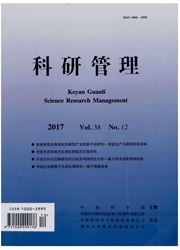

 中文摘要:
中文摘要:
转型升级背景下,停留在仿造战略的企业,如何实现战略转型,实现能力重构成为学界和业界关注的焦点问题。针对此问题,本文以我国软件企业信雅达作为观测样本,进行了探索性纵向案例研究,揭示了战略转型背景下企业创新能力重构过程中的“破坏-增强”二元平衡机理。一方面,创新能力重构过程中自上而下的能力破坏机理:有着复杂战略构想的企业,更易通过战略性学习全面感知到环境中的新机会,进而自上而下地引发创新能力进行主动有意识的变异,促进创新能力的创造性破坏。另一方面,创新能力重构过程中自下而上的能力增强机理:通过惯例化学习从工作实践中抽象出惯例,再通过能力学习从惯例中抽象出能力。使其从个人层面向企业层面扩散,实现自下而上的能力变异和积累。这一发现将能力破坏型的战略性学习和能力增强型的能力学习、惯例化学习结合起来,发现了其匹配均衡的二元机理,对动态能力观、能力重构和组织学习等研究领域具有理论意义;对处于战略转型的企业的创新活动具有实际意义。
 英文摘要:
英文摘要:
Under the background of economic transition and upgrading, it becomes the focus issue in both academia and industry that how enterprises,whoused to adopt the imitation strategy, achieve capability reconfiguration. In order to solve this problem, this paper selected Sunyard, a software enterprise, as the observed sample, and conducted a longitude case study (from 1996 to 2012). Results showed an ambidexterity mechanism between capability disruptive learning and capability reinforced learning in the process of enterprise innovation capability reconfiguration. On the one hand, there is a top - down capability disruptive learning mechanism. Enterprises with complex strategic schema are able to recognize new opportunities during strategic learning process, and identify the direction of new variation of innovation capability reconfignratiou. On the other hand, there is a bottom -up capability reinforced learning mechanism. Enterprises abstract routines form work practices during routinized learning process. Then, enterprises abstract capabilities form routines and leveraged it from personal - level to enterprise - level during capability learning process. This finding integrated the theory of capability disruptive learning ( strategic learning) and capability reinforced learning (capability learning and routinized learning), highlighted the ambidexterity mechanism between them. This paper not only has theoretical contribution on dynamic capability perspective, capability reconfiguration and organizational learning theory, but also has managerial implication on enterprises' innovation management practice under transition context.
 同期刊论文项目
同期刊论文项目
 同项目期刊论文
同项目期刊论文
 期刊信息
期刊信息
